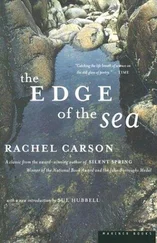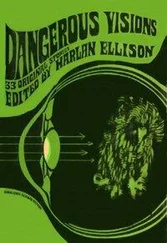22 22.When commentators talk about intelligence: 62 percent of praise was aimed at players with lighter skin tone, 63.33 percent of criticism was aimed at players with darker skin tone. When commentators talk about work ethic, 60.40 percent of praise is aimed at players with lighter skin tone. See Danny McLoughlin, Racial bias in football commentary (Study): The pace and power effect, RunRepeat (August 6, 2021).
23 23.Jim Collins and Morten T. Hansen, Great by Choice: Uncertainty, Chaos, and Luck – Why Some Thrive Despite Them All (New York: Harper Business, 2011).
24 24.“Stats and Events,” CAL Fire, https://www.fire.ca.gov/stats-events/ and “California Wildfires History and Statistics,” Frontline Wildfire Defense, https://www.frontlinewildfire.com/california-wildfires-history-statistics/.
25 25.Walter B. Cannon, The Wisdom of the Body (New York: W.W. Norton & Company, 1932).
26 26.Shelley E. Taylor, Laura Cousino Klein, Brian P. Lewis, et al., “Biobehavioral Responses to Stress in Females: Tend‐and‐Befriend, Not Fight‐or‐Flight,” Psychological Review 107 (3) (2000): 411–429.
27 27.These patterns may not be evenly distributed. As we saw earlier, Shelley Taylor's research suggests women are more likely to “tend and friend.” I would not be surprised if there was a dimension that tested differences based on race, but I'm unaware of research that tested this yet.
28 28.Everett Harper, “Company Talk about Police Shootings, as Target and CEO,” Forbes, May 27, 2020.
29 29.Center for Advanced Study in Behavioral Sciences, CASBS Summit: The Future of Agency: Transforming the University and City‐State, Stanford University. November 30, 2015, https://youtu.be/VJzr85nfxgECASBS Presentation.
Part 1 WHAT IS MOVE TO THE EDGE, DECLARE IT CENTER?
Making decisions under complexity and uncertainty requires sustained effort. The framework is composed of the methods of Move to the Edge and processes of Declare It Center . This combination enables others to participate, iterate scale, and sustain throughout the team or organization.
The methods of Move to the Edge and the processes of Declare It Center are both composed of a series of practices, Exterior and Interior. The Exterior Practices are visible, consisting of documents, playbooks, and processes. The Interior Practices are emotional, consisting of habits, inner work, and behaviors. Both are crucial. Exterior Practices alone can create the illusion of omniscience, ill‐prepared for the impact of human feelings. Interior Practices alone don't enable others to follow, share, and improve one's own work. Both are needed for organizations to move through complex, uncertain situations, and to then center on systems to sustain, scale, and share the work.

Chapter 1 A FRAMEWORK TO MAKE DECISIONS UNDER COMPLEXITY AND UNCERTAINTY
Ihave a long history with insomnia. I wake up around 2 a.m. and stay awake for several hours. In Brazil, this time is called the madrugada , a time for creative expression without the filter of rational, conscious thinking. 1 At my best, I use the time to pursue my curiosity, making connections between different domains in art, sports, psychology, and history. Like the phenomenon of getting your best ideas in the shower, I dictate ideas into my phone without censoring. Most ideas are worthless, but I value the exploration.
One night in 2015, I was watching Andy Warhol, A Documentary Film 2 on the career of Andy Warhol. My curiosity was piqued because both my parents share his hometown of Pittsburgh, Pennsylvania, and my great‐uncle Mozelle, another gay, Pittsburgh‐native visual artist, arrived in New York during the same period in the early 1960s.
The New York art scene in the late 1950s and early 1960s was dominated by the abstract expressionists – Jackson Pollock and Willem De Kooning, for example – and the galleries and patrons were uninterested in Andy Warhol. His style couldn't be more antithetical to the intuitive sweeps and drops of Jackson Pollock, and he couldn't get anyone to show his Campbell's Soup can paintings. His first show was in Los Angeles, and with that success, Warhol doubled down on his art, started The Factory in 1962, and proceeded to upend the art establishment. 3 He had a vivid impact on culture for the next two decades.
So how did Warhol overturn the dominance of the Expressionist crowd into the era‐defining movement of “pop art”? According to art historian Dave Hickey, Warhol declared, “This is the new world of art we need to live in; the rest is history.” The established art world had to address his work, even if only by dismissing and denigrating it. As a result, Warhol turned the conversation onto himself on his terms, garnering more attention, and gaining more acolytes in fellow artists and buyers. It was a brilliant strategy, summarized by Hickey in this quote:
Move to the edge, declare it the center, and let the world reorganize itself around you.
I immediately stopped the video and replayed that section to make sure I heard it right. I did a voice recording of the backstory, and as I did, I felt my cheeks radiating heat in the madrugada winter darkness.
THIS. This was the core of what we were doing at Truss. We were building a values‐driven, remote‐first, diverse software company. I was a Black non‐engineering CEO with two technical cofounders, and we were digging into our own pockets without the help of investors. As my cofounder Mark said, “We run to the trash fires instead of away from them,” because we wanted to tackle the most complex, challenging, and impactful problems.
It took almost a decade since the founding of Truss for the world to reorganize itself, but now our decisions to be remote‐first and highly diverse look a lot more prescient.
Why? Because the nature of systems and problems has changed from complicated to complex, how we approach our work has newfound currency.
What Is Move to the Edge?
Move to the Edge is about being on the boundary of your knowledge and the unknown. Move to the Edge involves methods for discovering insights by creating experiments, iterating quickly, and identifying levers of change. It involves intersecting with other boundaries and overlapping with other people's mental models, networks, or schools of thought. It can open up different perspectives and insights that cannot be viewed from the center. Most importantly, Move to the Edge starts with a verb. Move is a series of actions fueled by intent, desire, and curiosity.
Even if we are highly accomplished, we can always move to the edge of our knowledge. There are many examples of elite athletes, musicians, and artists practicing skills on the edge of their ability, more than skills at the center of their craft. That's Michael Jordan developing a late‐career turnaround jump shot. That's John Coltrane and Sonny Rollins taking a year off from performing and recording to develop the sound that influenced the next generation of jazz saxophonists. Indeed, Move to the Edge is one of the core principles of mastery.
You might conclude that moving to the edge is purely by choice. There's one problem: When the context shifts, you might find yourself moved to the edge. Ask Kodak, Blockbuster, and BlackBerry about being oblivious, slow, or resistant to consumer shifts. Instead of being the center, we can find ourselves at the edge, and suddenly many of our assumptions must be questioned.
When the pandemic hit, people around the world found themselves working from home. Think about all the assumptions about what the center was in January 2020, for everyone. These assumptions are no longer valid because it is starkly clear that there will be a new normal in the 2020s.
Читать дальше













